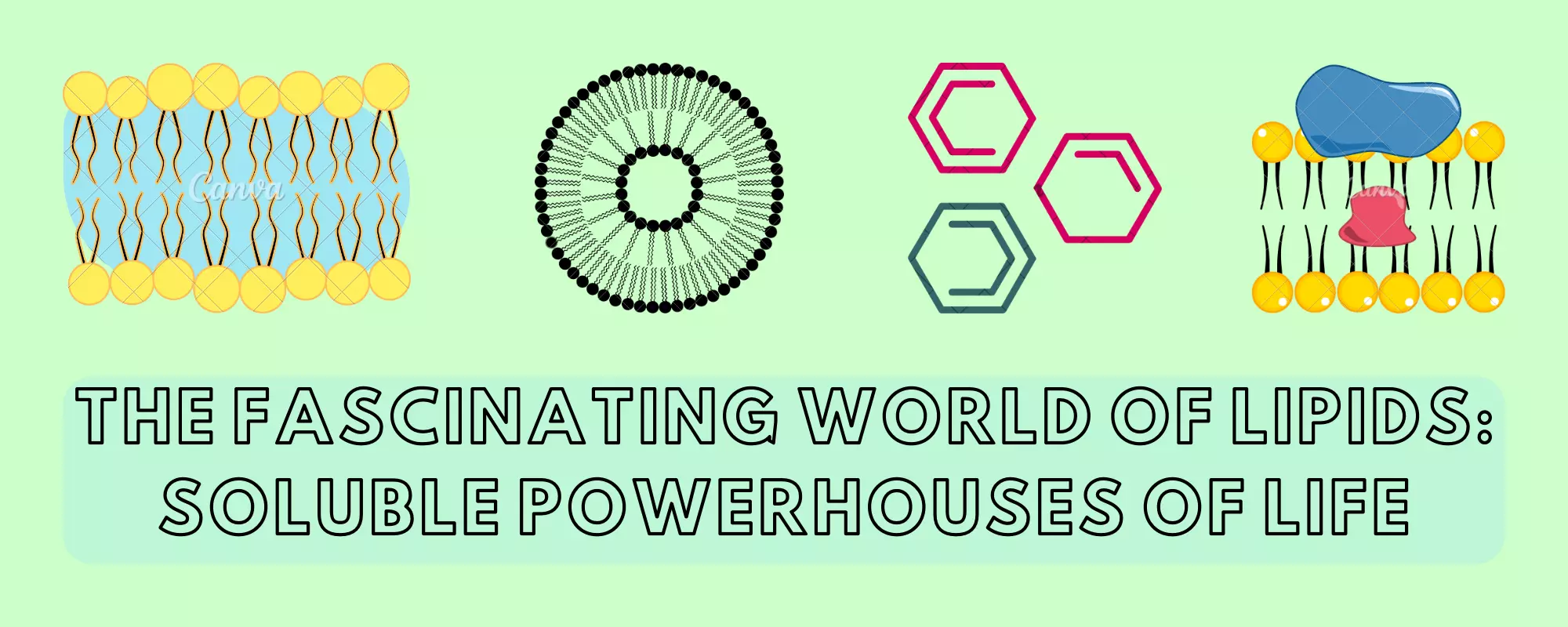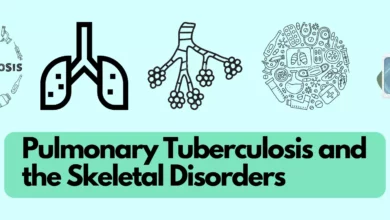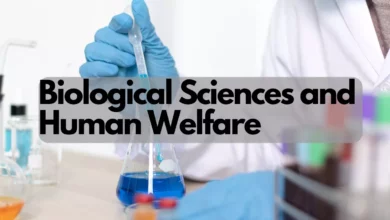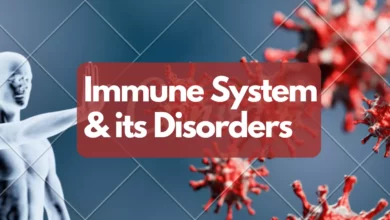The Fascinating World of Lipids: Soluble Powerhouses of Life
Increase your knowledge about lipids. Learn about the properties, functions and roles of Lipids
Lipids are the most vital organic compounds as they serve multiple essential roles in living organisms. Organic compounds are one of the wonders of our body. Organic compounds, especially, lipids are the one that hold and form our cells. Lipids are involved in hormone production, facilitate nutrient absorption, and play a crucial role in nerve function and cell signaling. They are vital for overall physiological processes, ensuring proper energy metabolism, cellular communication, and maintaining the integrity and functionality of cells and organs.
Table of Contents
Lipids
Lipids are naturally occurring organic compounds of animal and plant origin that are soluble in organic solvents and belong to a heterogeneous group of substances.
These molecules consist of carbon, hydrogen, and oxygen atoms. Lipids are the main constituents of all cell membranes, serve as food storage molecules, and include vitamins A, D, E, and K, as well as cholesterol.
All lipids share the common property of being hydrophobic. Fats and oils are composed of two types of molecules: glycerol (an alcohol with a hydroxyl group on each of its three carbons) and three fatty acids joined by dehydration synthesis. Because they have three fatty acids attached, they are called triglycerides.

Classification of Lipids
There are three broad classes of lipids, which are discussed below.
Simple Lipids
These are esters of fatty acids with glycerol. Examples include triglycerides, neutral fats, and waxes.
Compound Lipids
These lipids contain radicals in addition to fatty acids and alcohol. Examples include phospholipids (phosphatides), plasmalogens, inositol, and sphingomyelin.
Derived Lipids
These lipids are the hydrolytic products of compound lipids. An example is fatty acids.
Structure of Lipids
Lipids are generally defined in terms of solubility rather than specific structures, as is the case with proteins and nucleic acids. Lipids associate with each other through van der Waals forces and the hydrophobic effect. Specifically, we will discuss the structure of “fatty acids.”
The “tail” of a fatty acid is a long hydrocarbon chain, making it hydrophobic. The “head” of the molecule is a hydrophilic carboxyl group. Fatty acids are the main component of soap, where their tails are soluble in oily dirt and their heads are soluble in water, allowing them to emulsify and wash away the oily dirt. However, when the head end is attached to glycerol to form fat, the entire molecule becomes hydrophobic.
Also Read: Pulmonary Tuberculosis
Properties of Lipids
Physical Properties:
- Oils and fats can be either liquids or non-crystalline solids at room temperature.
- Fats and oils in their pure states are colorless, odorless, and tasteless.
- The presence of foreign substances can cause colored fats; for example, the yellow color of butter is due to the presence of keratin.
- Lipids are lighter than water.
- They are insoluble in water.
- They are readily soluble in organic solvents such as diethyl ether, carbon disulfide, acetone, benzene, chloroform, and carbon tetrachloride.
- They form emulsions when agitated with water in the presence of soap or another emulsifier.
- Fats and oils are poor conductors of heat and electricity, serving as excellent insulators for the animal body.

Chemical Properties:
- Fats and oils undergo various types of reactions, with the most important being hydrolysis.
- Fats and oils are triglycerides, which are triesters. They are hydrolyzed by enzyme catalysts called lipases. This hydrolysis primarily occurs in the digestive tract of humans and animals, producing fatty acids that play important roles in metabolic pathways.
- Saponification is the hydrolysis of triglycerides (oils or fats) by alkalies. It produces glycerol along with sodium or potassium salts of fatty acids, which are known as soaps.
- Hardening of oils involves saturating unsaturated triglycerides by passing hydrogen through them in the presence of metal catalysts. This process converts liquid triglycerides into semisolid triglycerides and is used commercially to produce vegetable ghee or margarine. Hardened oils are also extensively used in soap and candle production.
Nutritional and Biological Importance of Lipids
Lipids play three major biochemical roles:
- They serve as a storage form for metabolic energy in the form of triglycerides.
- They are components of cell membranes.
- They act as messengers, including prostaglandins and steroid hormones.
A major role of lipids in nutrition is to provide energy, as unsaturated, saturated, and trans fats all provide about 9 calories per gram, compared to carbohydrates or protein which provide 4 calories per gram. While high in calories, fat does not necessarily cause weight gain if total intake is monitored. Our bodies also need dietary fat to absorb and utilize fat-soluble essential nutrients such as vitamin A, vitamin D, and vitamin E.
Essential Lipids
Lipids that are not synthesized by our bodies and must be supplied through the diet are called essential lipids. The essential lipids are polyunsaturated fats known as omega-6 and omega-3 fats. These fats are necessary for hormone synthesis, cell membrane structure, and maintaining a healthy brain, vision, and blood cholesterol levels. Omega-6 fatty acids can be obtained from vegetable oils and nuts, while omega-3 fatty acids are found in flaxseed, walnuts, and fatty fish.
Non-Essential Lipids
Monounsaturated fatty acids are not essential in the diet because our bodies can synthesize them, but they may help reduce the risk of heart disease. Foods rich in monounsaturated fats include olive oil, peanuts, and avocados. Saturated fat, trans fat, and cholesterol are not needed in our diet and can raise levels of bad cholesterol in the blood. Saturated fat is found in fatty meats, cheese, palm and coconut oil, and butter. Trans fat is present in partially hydrogenated oils used in processed and fried foods, while cholesterol is found in fatty animal foods.
Functions of Lipids
- Tissue reconstruction
- Nervous system organization
- Maintaining normal skin function
- Formation of antibodies
- Good functioning of endocrine glands, such as the thyroid
- Regulation of water metabolism
Interesting Fact
Our bodies produce approximately 2 grams of cholesterol per day, accounting for about 85% of blood cholesterol, while only about 15% comes from dietary sources.
What are the main sources of lipids?
The main sources of lipids include:
- Fats and oils (olive oil, canola oil, coconut oil)
- Nuts and seeds (almonds, walnuts, flaxseeds)
- Avocados
- Dairy products (cheese, butter, milk)
- Meat and poultry
- Fish and seafood
- Eggs
How do lipids help keep living things alive?
Lipids provide energy, form cell membranes, regulate hormones, insulate and protect organs, aid in nutrient absorption, and facilitate cellular signaling, all of which are essential for the survival and functioning of living organisms.
Also Read: Biological Sciences and Human Welfare
What is one of the most important lipids for life?
The most important lipids for life is phospholipids. Phospholipids are a major component of cell membranes and play a crucial role in maintaining the integrity and functionality of cells. They form a lipid bilayer structure that acts as a barrier, regulating the entry and exit of substances into and out of cells.
Phospholipids also contribute to cell signaling and serve as a platform for various cellular processes. Without phospholipids, the basic structure and function of cells would be compromised, making them essential for life. Phospholipids make the cell membrane which holds the proper shape of cells.





